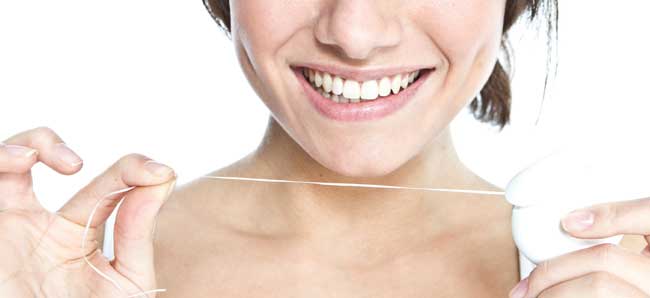How Does Diabetes Affect Your Mouth?

What You Need To Know: The Effect Diabetes Has On Oral Health Diabetes affects every aspect of your life. From ensuring your blood sugar is at the right level to keeping up with regular exercise, managing diabetes is no easy task. You must be aware of many complications that can arise from diabetes, and your oral health is no exception. Since it’s National Diabetes Month, we have provided information and tips to consider regarding the relationship between diabetes and your oral health. According to the Centers for Disease Control, 29.1 million Americans have diabetes—and 8.1 million of those do not know they have the disease. If you’re not sure if you might have diabetes, the first step to taking care of your body is finding out if that’s the case. Some common symptoms of diabetes include: Blurred vision Hunger and fatigue Peeing more frequently while also being thirstier Dry mouth and itchy skin More symptoms that can indicate longer term damage caused by diabetes include: Yeast Infections (for both genders) Pain or numbness in your legs and feet Cuts or sores that heal slowly If you are experiencing these symptoms, go see your physician and get tested for diabetes. For your oral health, the symptoms take a while longer to show that actual damage that is occurring in your mouth if left untreated. Keep notice for symptoms like: Puffy, swollen gums that bleed when brushed or flossed Loose teeth Bad breath Receding gums These are all signs of gingivitis, which if left untreated, can turn into periodontitis. How does diabetes contribute to gum disease? There are a few major ways diabetes affects your mouth. First, if your blood sugar levels are left unchecked, the glucose level of your saliva rises. Glucose is a type of sugar, and bacteria loves sugar, which will speed up the progress of gum disease. Second, with diabetes, your blood vessels thicken, making it harder for them to deliver oxygen and nutrients, as well as to take away waste. Lastly, a symptom of diabetes is dry mouth. Saliva helps keep the bacteria from sticking to your teeth, and a lack of saliva makes it easier for plaque and tartar to develop. How do I prevent gum disease caused by diabetes? Control your blood sugar levels. This is done in many ways, such as taking insulin injections, eating different foods, exercising, and visiting your physician regularly. Brush and floss every day — This advice may seem obvious, but it’s tried and true. Removing plaque from your gumline and stimulating your gums are an excellent way to prevent gum disease. Visit your dentist for teeth cleanings — If you don’t have signs of gum disease yet, stay up to date on your regular teeth cleaning every six months. If you do have gingivitis or periodontal disease, a deeper clean will be required to prevent further tooth damage. Whether you have diabetes or not, it is still very important to take care of your mouth. Recent studies have shown that not only are people with diabetes more likely to be afflicted by periodontal disease, but people with periodontal disease are more susceptible to getting diabetes as well. While diabetes and periodontal disease can affect your quality of life, if treated early and often, you can mitigate much damage caused by these diseases. Call 661.202.3542 to see how we can help today. Sources: https://www.diabetes.org/living-with-diabetes/treatment-and-care/oral-health-and-hygiene/diabetes-and-oral-health.html https://www.diabetes.org/living-with-diabetes/treatment-and-care/oral-health-and-hygiene/warning-signs.html https://www.mouthhealthy.org/en/az-topics/d/diabetes
Should You Keep Flossing?

Flossing: In or Out? It’s been six months since your last teeth cleaning. You arrive at your appointment and get called to head to the back by your hygienist. As she begins cleaning your teeth, she asks the question we all dread. “How often do you floss?” If you’re like many people, you might stretch the truth, or justify telling a white lie since you DID use a toothpick after dinner a few nights back. Maybe now—lucky you!–you won’t have to answer that question any longer. Just recently the USDA and Department of Health and Human Services stated that flossing has been not been proven to be effective, and removed it from their dietary guidelines. Well, slow down, my friend. You’re not off the hook just yet. While this bold statement is technically true, there are still a few things to consider. First, the guidelines don’t say that flossing is bad or ineffective; they’re just saying there isn’t enough evidence in studies to prove it does help. The difference may feel like a matter of semantics, so for your own peace of mind, ask any dentist if you should floss. But you probably already know what their answer will be. Your teeth consist of five surfaces, and brushing your teeth will hit all but two. Flossing will take care of the two remaining surfaces (the surfaces between your teeth) and ensure that plaque does not become tartar, which eats away at your teeth and gums. While flossing can help prevent tooth decay, a study by the Central for Disease Control shows that only 30% of the U.S. population flosses daily. If you’re one of the 70% of people who don’t floss daily, you should know there are many alternatives to floss out there that can be just as effective in cleaning between your teeth. Interdental Brushes – These are little brushes that you used to brush in between your teeth. People find these much easier to use than floss, and are good for people who have braces or larger gaps between their teeth. Waterpik – The waterpik shoots a small, strong stream of water that can fit between small crevices in your teeth. It’s great to use for washing away plaque that can gather in pockets, but can take more time to master than floss or interdental brushes. Floss Picks – A floss pick is a small piece of floss attached to a handle. These have become popular in recent times due to how convenient they are to use, but there are a few things to consider when using them. Since the floss is attached to a handle, manipulating the floss to hit all of the surfaces of your teeth can be difficult. Additionally, the recommended amount of floss to be used in a session is 12-18 inches, and the typical floss pick is only about two inches. Consider using more than one floss pick per session. Regardless of what technique you use to clean between your teeth, the overall consensus is that anything is better than nothing. Have a difficult time flossing every day? Start by doing it three times a week. Flossing takes time and doesn’t give immediate results, but think of it as an investment in your mouth’s future. If you have any concerns about flossing, reach out to your Palmdale, CA dentist today. Just think about how good it will feel to tell your dentist and hygienist that you’ve been consistently cleaning in between your teeth!
Four Rare and Interesting Dental Anomalies

Four Rare and Interesting Dental Anomalies Everyone knows the saying, “Curiosity killed the cat.” Do cats have a saying for us? If they could talk, it would be along the line of, “Curiosity drives humans crazy until they find out what they’re looking for.” In the dental world, there are many fascinating cases and conditions to find out about. Here are four dental oddities that will more than satisfy your curiosity for the time being. 1. Tooth Fusion Teeth fusion happens when two separate teeth combine to become one bigger tooth. The teeth start out as two tooth buds, but join into one tooth above the gum. Other than the slightly bigger look of the tooth, you can also notice tooth fusion when the person has one less tooth than they should. 2. Concrescence Concrescence, similar to fusion, takes place when two teeth join; however, in this case, the cementum, which covers the roots of your teeth, fuses below the gum. Appearance-wise, the teeth look normal, but underneath the gums the roots are joined together. Anomalies like concrescence demonstrate why x-rays are very important. If one tooth needs to be extracted, but it is affected by concrescence, your dentist will need to perform surgery to separate the two teeth. While there are no health-critical issues involved with concrescence and fusion, your dentist should be aware of them and monitor them for cavities and other dental issues. 3. Hereditary Gingival Fibromatosis This condition’s name may be long, but thankfully it is a rare dental issue, affecting only one in 175,000 people. Hereditary Gingival Fibromatosis (HGF) occurs when your gums overgrow your teeth. There are varying degrees of HGF, but common symptoms include abnormal tooth movement as well as difficulties chewing and speaking. While HGF is not a life-threatening condition, it does need to be treated to improve quality of life. 4. Shark Teeth Shark teeth are actually more common than you’d think. They happen when children’s permanent teeth grow in before their primary (baby) teeth have fallen out, resulting in two layers of teeth, like a shark. Typically, shark teeth go away on their own. You just have to be patient and wait for the child’s body to do the work. However, if the permanent teeth have fully grown in, and the baby teeth have yet to fall out, the tooth roots may not dissolve on their own. If the teeth get to this point, contact your Palmdale, CA dentist to extract the baby teeth. If you or someone you know is affected by any of these dental rarities, there’s usually no need to worry. These conditions (except for HGF) most commonly happen to primary teeth, and the best thing you can do to address them is to go to your dentist for regular check-ups. Resources: https://www.ncbi.nlm.nih.gov/pmc/articles/PMC3354801/ https://dentistry.umkc.edu/Practicing_Communities/asset/AbnormalitiesofTeeth.pdf https://oasisdiscussions.ca/2015/07/30/fctg/
Dental Tips for the Mentally Disabled

National Down Syndrome Awareness Month: Dental Tips for the Developmentally Disabled If you’ve ever taken care of someone else, you understand how difficult it can be to get them to brush their teeth and floss every day. When you’re caring for a child—or adult—with a disability, the challenges can be even greater, as they may be predisposed to certain oral health conditions. On top of that, going to the dentist can be stressful to anyone, let alone someone who’s not able to prepare for what to expect. October is National Down Syndrome Awareness Month, and we would like to share a few tips you as a caregiver can do to make sure your loved one maintains a healthy smile. Dental Issues for People with Down Syndrome There are common mouth issues that are associated with Down syndrome. Being aware of these issues will allow you to prepare and understand what steps to take next. Children with Down syndrome often wait twice as long for baby teeth to arrive–usually around 12 to 14 months. Along with delayed eruption, they may have missing teeth, or their teeth may emerge in a different order than usual. People with Down syndrome have a smaller upper jaw, which will crowd the upper teeth, causing an unaligned bite. Orthodontics can solve this issue, but they can be problematic for younger children. You may want to wait until they are older. Down syndrome also compromises the immune system, leading to a higher chance of periodontal disease (gum disease). However, the treatment for gum disease remains the same: Brush their teeth at least twice a day. Floss every day. Visit the dentist regularly. X-rays and examinations are particularly important to monitor common mouth issues associated with Down syndrome. How to Prepare for Going to the Dentist Going to the dentist can be frightening for children or adults with Down syndrome or autism. Here are some steps you can take to make the visit to the dentist go as smoothly as possible. Inform them of what to expect. Showing them what will happen while at the dentist’s office will eliminate their fear of the unknown. Fraser has created a great app for children and adults with mental disabilities. It uses social stories and videos to educate kids on various dental topics, including the sounds they will hear and instructions they’ll receive at the dental office, as well as steps they can take to maintain their oral health at home: My Healthy Smile Before you bring your loved one in for care, schedule an appointment to meet with the dentist to explain how to best accommodate your loved one during a dental visit. As a side benefit, you will both have some time to establish a relationship with the dentist so everyone can be more comfortable with the process. Taking care of a disabled person’s dental needs can be challenging. Here at AV Sierra Dental Center, we want to make your visit an enjoyable and rewarding experience for everyone. Contact us today to set up an appointment. Resources: https://www.ndss.org/Resources/Health-Care/Associated-Conditions/Dental-Issues-Down-Syndrome/ https://www.autismspeaks.org/sites/default/files/documents/dentalguide.pdf
How to Pull a Child’s Tooth

My Kid’s Tooth Is Loose — What’s Next? Being a parent is one of the most stressful tasks in a person’s life. Once you master one stage of your child’s life, they move on to the next stage with a whole new set of problems to figure out. Case in point: their mouth. You spend years ensuring their teeth come in healthy and clean, only for them to start to fall out. As much as we love to hear the types of methods used to remove loose baby (also called primary) teeth, there are issues that can arise from this type of removal. How Do I Know When a Tooth Is Ready to Be Pulled? A loose tooth can cause your child pain and discomfort. You may have the urge to pull it out, but there are a few reasons why that might not be the best idea. Be cautious of which teeth are loose first. The first teeth that come in are usually the first teeth to come out (the front teeth should normally become loose before the back teeth). A loose tooth could be caused by damage to that tooth — for instance, from a nasty fall. If you have concern that a tooth is loose due to something other than natural causes, contact your dentist for an examination. Primary teeth help guide in adult teeth. If a tooth is pulled prematurely, this can affect the placement of one’s adult tooth. Be aware of your child’s discomfort. If the tooth isn’t ready to come out yet, it will most likely still be connected to nerves, causing pain. Another indicator the tooth isn’t ready to come out yet is if there is a lot of blood when it’s pulled. You Won’t Let Me Tie Their Loose Tooth to a Drone – What Should I Do Instead? To keep things natural, a good rule of thumb is to do what cavemen did. They didn’t have doors and automobiles to attach their loose teeth to, did they? If your child indicates they have a loose tooth, be sure to monitor it. Some kids may become anxious thinking about their teeth falling out. If this is the case, be reassuring and encouraging throughout the process. Beyond that, they will do all of the work. Once they find out they have a loose tooth, they will wiggle it with their tongue or fingers, leading to it falling out in a less intrusive way. If the tooth seems fairly loose and you want to help out, use a piece of gauze and gently pull the tooth while doing a wiggling motion. You shouldn’t have to use much force at all, so if doesn’t come out with a gentle pull, it probably isn’t ready yet. There are general guidelines of when teeth are expected to become loose and fall out, but every child will be different. If you are concerned with how long your child’s baby teeth have remained in their mouth, a dentist can determine if any of them need to be pulled, while considering the health of their future adult teeth. Tips for Giving Your Child Healthy Adult Teeth There may be a train of thought that since baby teeth fall out, there isn’t as much of a need to care for them as compared to adult teeth. This could not be further from the truth. Taking care of children’s teeth (and gums) sets them up for a lifetime of healthy teeth. While baby teeth do eventually fall out, they will have them for around 10 to 12 years. Not only will this set them up successfully for the future, but kids need a healthy mouth to enjoy the first part of their life as well. Brush their teeth after every meal. The ADA has great advice on how to brush kids’ teeth. When a tooth starts to become loose, be sure to floss underneath it as well. Food can get caught in any crevice and will become a buffet for cavity-causing bacteria. Watch for certain behaviors from your child like thumb sucking and tongue thrusting. At AV Sierra Dental Center, we understand the importance of the role children’s teeth play in their health. Request an appointment online with your Palmdale, CA dentist for a consultation today.
